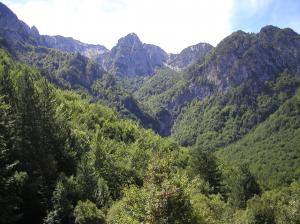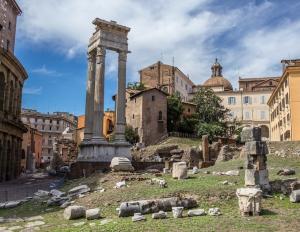The Apennines conserve some intact ecosystems that have survived human intervention. In these are some of the best preserved forests and montane grasslands in Europe, now protected by national parks and, within them, a high diversity of flora and fauna. These mountains are one of the last refuges of the big European predators such as the Italian wolf and the Marsican brown bear, now extinct in the rest of Central Europe.
The mountains lend their name to the Apennine peninsula that forms the major part of Italy. They are mostly verdant, although one side of the highest peak, Corno Grande, is partially covered by Calderone glacier, the only glacier in the Apennines

















